The human story of hair is etched into the very core of our being, a profound testament to identity, tradition, and the passage of time. For those of us who carry the legacy of textured hair, the echoes of ancestral practices resonate with a particular clarity, offering glimpses into a past where self-care was intertwined with cultural reverence. We embark on a journey back to ancient Egypt, a civilization where beauty was not merely a superficial pursuit, but an integral part of life’s spiritual and social fabric.
Here, in this land of enduring mysteries and sun-kissed sands, the question of what natural substances colored Egyptian textured hair opens a dialogue with our heritage, inviting us to connect with the ingenious wisdom of those who came before us. This exploration delves into the elemental biology of hair, traces the living traditions of its care, and acknowledges its unwavering role in shaping identity, all through the powerful lens of heritage.
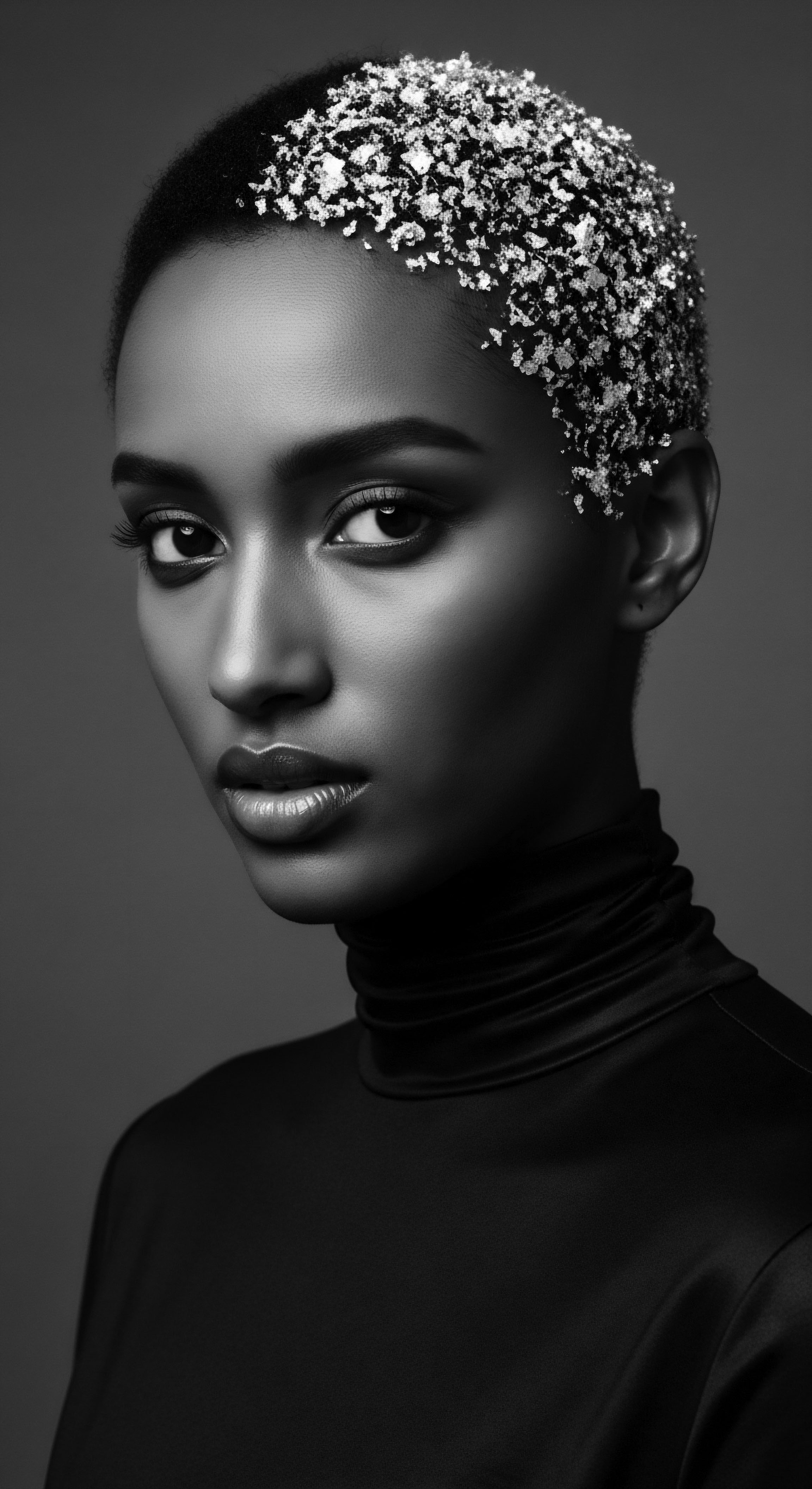
Roots
The origins of cosmetic practices in ancient Egypt are deeply rooted in a sophisticated understanding of their natural world and a profound respect for personal presentation, extending even to the afterlife. Hair, in particular, held immense symbolic weight, often signifying vitality and social standing. The Egyptians, with their keen observational skills, recognized that hair, like the earth itself, possessed varying textures and shades. While the popular imagination often conjures images of dark, sleek Egyptian tresses, archaeological findings and artistic depictions reveal a vibrant spectrum of hair types, including those with substantial coil and curl patterns.
These diverse textures, inherited through various ancestral lineages within the Nile Valley, were meticulously cared for, styled, and, yes, colored using the bounty of the land. The natural world provided the palette for adornment, and the substances chosen for hair coloring were far from arbitrary; they were selected for their efficacy, their availability, and often, their perceived beneficial properties for the hair itself.
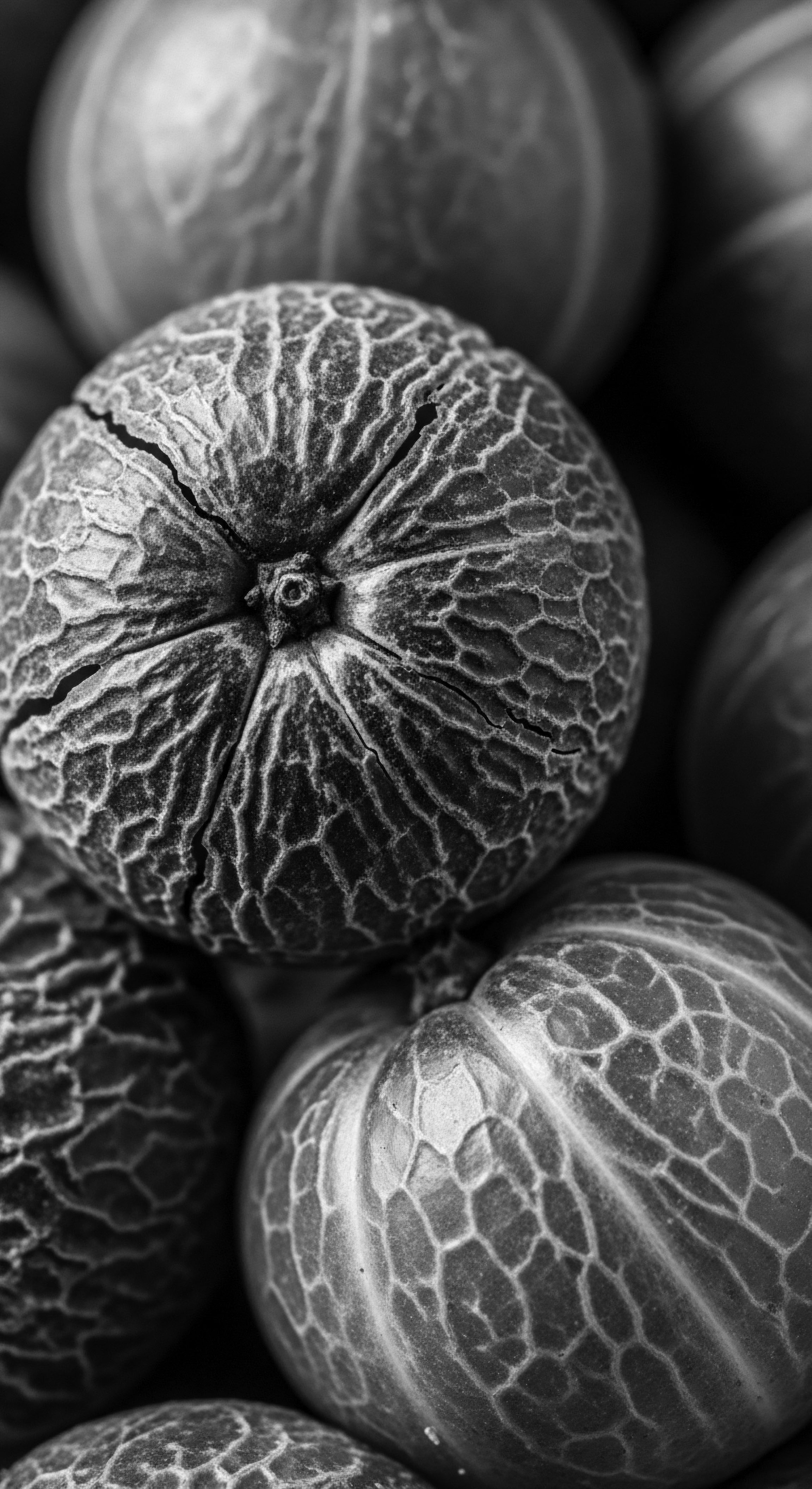
Hair’s Structural Echoes Through Time
Understanding what colored ancient Egyptian textured hair first requires a glance at the very structure of the strand. Hair, at its elemental level, comprises keratin proteins, arranged in layers—the protective outer cuticle, the central cortex housing melanin (our natural pigment), and the innermost medulla. Textured hair, whether tightly coiled, loosely curled, or wavy, possesses unique cuticle patterns and cortical structures that influence how it absorbs and retains moisture and, crucially, how it interacts with external substances. Ancient Egyptians, though without modern microscopic tools, grasped the physical properties of hair through intimate, hands-on knowledge passed down through generations.
They knew, for example, that certain plant pastes would adhere to the hair’s surface, depositing color without drastically altering the hair’s inherent structure. This intuitive understanding of hair’s anatomy formed the basis of their cosmetic chemistry.
Consider the deep significance placed on hair, extending beyond mere aesthetics. Ancient texts, while not explicitly detailing hair products, allude to scented oils and lotions for the body, suggesting a similar meticulousness for hair. The prevalence of wigs, often crafted from human hair, further underscores this devotion. For many, particularly the elite, wigs served a dual purpose ❉ safeguarding natural hair from lice and the harsh desert sun, while offering a canvas for elaborate styling.
Priests, for instance, often kept their heads shaven to maintain ritual purity, donning wigs for formal occasions. This practice speaks volumes about the value placed on a well-groomed appearance, irrespective of the underlying natural state.

What Pigments Were Gifted by the Earth?
The principal substance used for coloring hair in ancient Egypt was Henna. Derived from the dried, crushed leaves of the Lawsonia inermis plant, henna yielded a distinctive red-orange hue. This plant flourished in the region’s warm, arid climate, making it an accessible and reliable source of color.
Henna’s pigment, lawsone, has a natural affinity for the keratin in hair, nails, and skin, binding to the outer cuticle layers to create a lasting stain. This natural process, which coats and partially penetrates the hair’s cuticle, means the color gradually fades rather than displaying harsh root lines as the hair grows.
Beyond henna’s signature warmth, archaeological and textual hints suggest the use of other natural pigments, though perhaps less extensively for hair coloring than for textiles or other cosmetic applications. Ochre, a naturally occurring earth pigment rich in iron oxides, presented possibilities for shades ranging from reds to yellows. While more prominently found in pigments for painting and dyeing linen, some historical accounts mention its use for hair. The practice of applying red ochre to the body and hair is not exclusive to Egypt; it is a cross-cultural phenomenon, with evidence of its use dating back hundreds of thousands of years.
Another plant-derived colorant, Indigo, from the Indigofera tinctoria plant, was widely used in ancient Egypt, primarily for dyeing textiles to achieve deep blue pigments. In other cultures, particularly in India and Persia, indigo was combined with henna to achieve darker tones, including black. While its direct and widespread use for coloring Egyptian textured hair for black shades is less documented than henna, the knowledge of its dyeing properties certainly existed.
It is plausible that various plant extracts, perhaps even juniper berries for blue-purple tones, were explored, though specific recipes remain elusive or ambiguously identified. These choices reflect an ancestral wisdom, a deep-seated understanding of how the land’s offerings could enhance and protect the physical form, maintaining a connection between the human body and the vibrant earth.
Ancient Egyptians meticulously sourced natural pigments like henna and ochre from their environment, understanding their unique interactions with hair’s varied textures.

Ritual
The application of color to hair in ancient Egypt was seldom a fleeting trend; it was a practice imbued with ritualistic intention, intertwining with notions of status, identity, and a reverence for the body, both in life and in preparation for the journey beyond. For textured hair, which often possesses its own distinct natural hues, coloring would have served not only to obscure signs of aging, like greying, but also to amplify existing beauty or to align with specific cultural aesthetics. This historical context provides a profound counterpoint to contemporary dialogues surrounding hair care and appearance, reminding us that the desires for self-expression through hair are ancient, resonant impulses, deeply tied to our collective heritage.
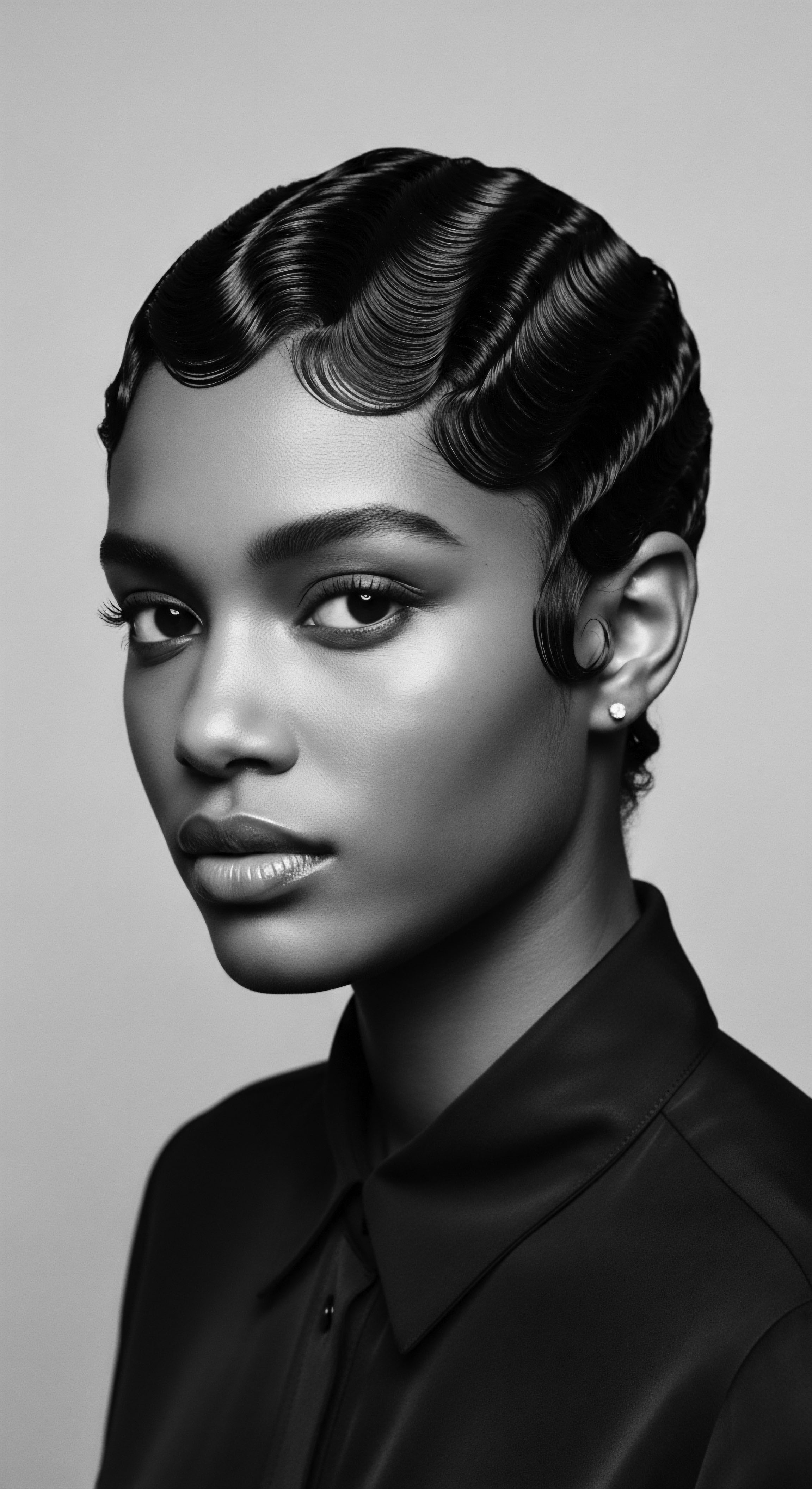
How Did Coloring Become a Sacred Hair Practice?
The act of coloring hair with natural substances formed part of a larger tapestry of ancient Egyptian beauty and grooming rituals. It was a practice not isolated to a single demographic; men and women, across various social strata, engaged in hair coloring. The primary objective often revolved around maintaining a youthful appearance, particularly by camouflaging grey hair, a concern that resonates across millennia.
In a society that highly valued physical perfection and vitality, especially in funerary contexts, restoring the hair’s perceived youthful vibrancy held significant meaning. The application of henna, for example, was a careful process, transforming the hair to a red-orange tint.
These processes frequently transcended simple vanity. Hair, considered a source of power and protection, particularly for children and the deceased, was often the subject of rituals. Locks of hair, sometimes braided and wrapped, have been discovered in ancient Egyptian tombs, suggesting offerings or a magical connotation. The very act of coloring, therefore, could have been perceived as a protective measure or a way to ensure the deceased maintained their ideal form in the afterlife.
The mummy of Ramesses II, a pharaoh of the Nineteenth Dynasty, provides a tangible link to this practice; his hair, naturally red in his youth, was reinforced with henna after his death, perhaps to restore his youthful appearance for eternity. This specific instance stands as a compelling historical example, demonstrating how the coloring of textured hair served not only earthly cosmetic needs but also profound spiritual beliefs related to immortality and ancestral lineage.
The meticulous preparation of these natural substances involved grinding plant materials into fine powders, then mixing them with liquids, often oils, to create a workable paste. This hands-on, artisanal approach connects us to an ancestral lineage of holistic care. The ingredients were not merely functional; they were often believed to possess additional benefits.
Henna, for example, also functioned as a conditioning agent, strengthening hair and providing a healthy sheen, particularly beneficial in Egypt’s arid climate. This dual purpose—aesthetic enhancement and therapeutic benefit—was a hallmark of ancient Egyptian wellness practices.

Dyeing Hair for Eternity and Identity
The evidence of hair coloring extends even into funerary practices, emphasizing the Egyptians’ belief in the continuity of the body’s integrity into the afterlife. The discovery of henna-dyed hair and nails on mummified bodies, some dating back to 3500 BCE, provides direct archaeological confirmation of these ancient traditions. This ritualistic application often occurred post-mortem, indicating its role in the embalming process itself, perhaps to strengthen the skin and slow decay, or to ensure the deceased retained a vibrant, youthful image in the realm of the ancestors.
The application methods, while not fully detailed in surviving texts, can be inferred from the state of preserved hair and comparisons to traditional practices that persist in parts of Africa today. The pastes would have been worked through the hair, from root to tip, allowed to set, and then rinsed. For coiled or tightly textured hair, this might have involved sectioning the hair, meticulously applying the paste to ensure even coverage, and possibly braiding or twisting it to keep the paste in contact with the strands. The density and curl pattern of textured hair can influence how pigments absorb, and skilled practitioners would have developed methods to achieve the desired effect on various hair types.
| Substance Henna (Lawsonia inermis) |
| Primary Color Red-orange, reddish-brown |
| Traditional Application & Cultural Link Applied as a paste to hair and nails for cosmetic purposes and funerary rites. Widely used across social classes. |
| Perceived Benefit Beyond Color Strengthening, conditioning, anti-microbial properties, associated with vitality. |
| Substance Red Ochre (Iron oxide) |
| Primary Color Red, reddish-brown, yellow |
| Traditional Application & Cultural Link Used for body adornment, textiles, and some hair coloring; found in settlements and burials. |
| Perceived Benefit Beyond Color Protection, connection to earth, cultural significance in various ancient societies. |
| Substance Indigo (Indigofera tinctoria) |
| Primary Color Blue, blue-black (often with henna) |
| Traditional Application & Cultural Link Mainly for textiles; historical use for hair (with henna) in India/Persia suggests potential Egyptian application. |
| Perceived Benefit Beyond Color None directly specified for Egyptian hair, but general plant benefits implied for other uses. |
| Substance Juniper Berry Extract |
| Primary Color Blue-purple, dark tones |
| Traditional Application & Cultural Link Possibly used in ointments for darkening hair; less explicit than henna. |
| Perceived Benefit Beyond Color Astringent properties; part of broader hair care ointments. |
| Substance The legacy of these natural substances reveals a deep connection between ancient Egyptian cosmetic practices and broader heritage, valuing both aesthetic and practical outcomes for textured hair. |
The Egyptian devotion to hair coloring went beyond surface aesthetics, serving as a symbolic link to vitality, social standing, and eternal preservation, particularly through the use of henna.
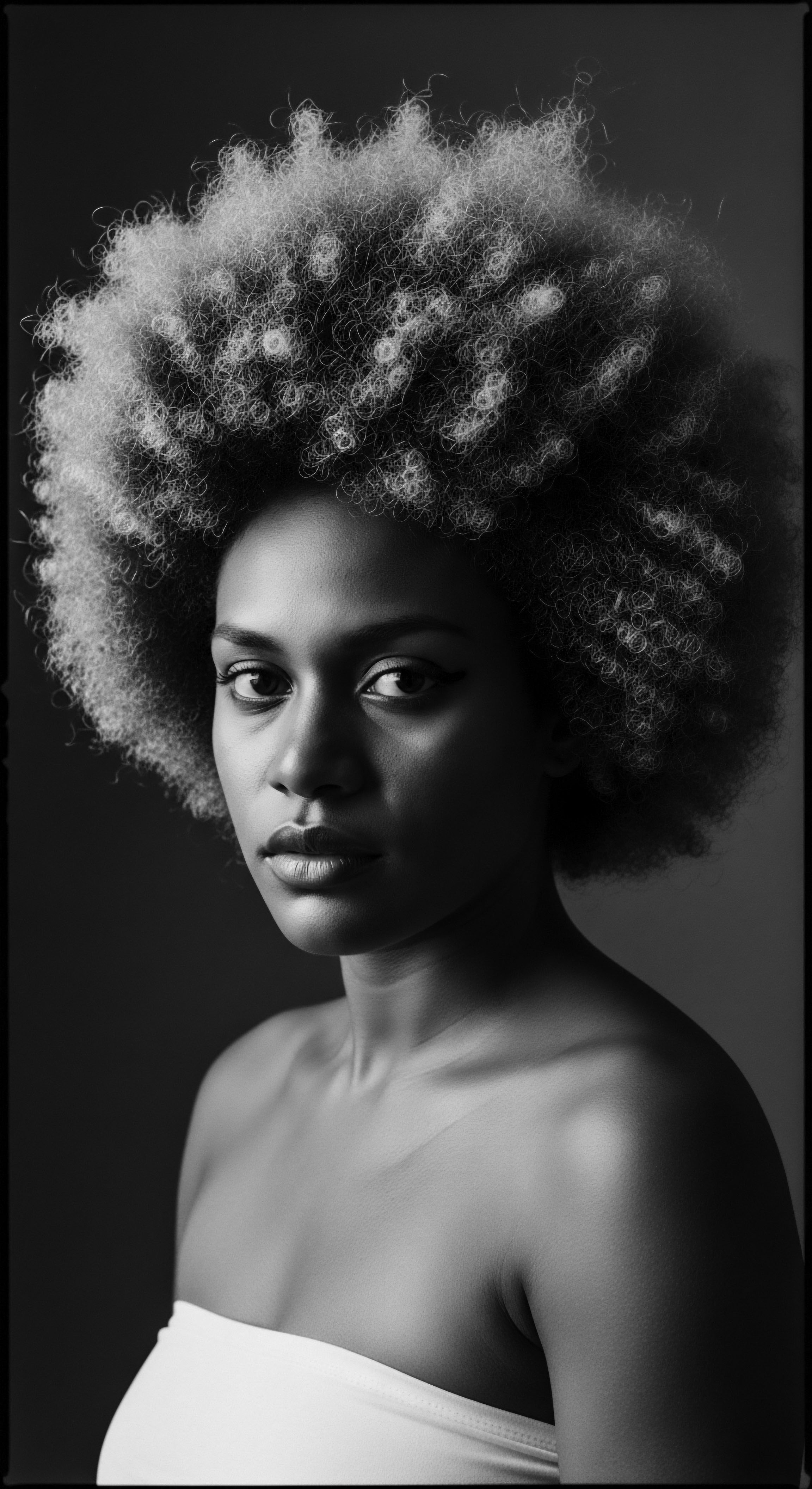
Relay
The story of ancient Egyptian hair coloring, particularly for textured strands, is not confined to the distant past; it is a living relay, a hand-off of wisdom that continues to shape contemporary conversations around heritage, wellness, and self-acceptance within Black and mixed-race communities. The meticulous care, the intentional use of natural substances, and the symbolic weight placed upon hair in ancient Egypt echo in modern hair practices, validating traditional knowledge with scientific understanding and providing a potent framework for celebrating diverse hair textures. This deep historical grounding offers a unique point of view for understanding how ancestral practices laid the foundation for today’s holistic hair wellness movements.
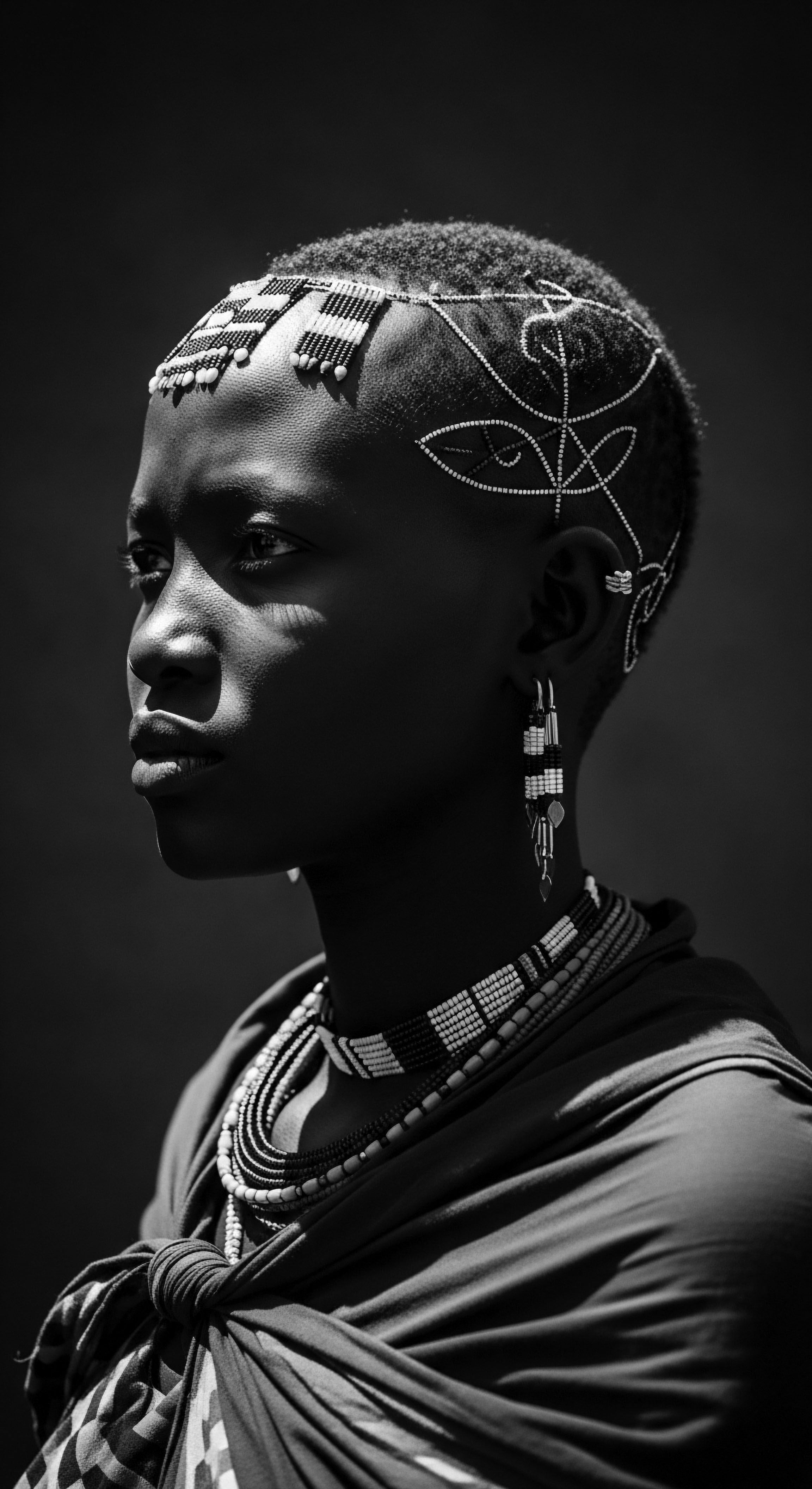
How Does Ancestral Practice Inform Modern Hair Science?
Modern scientific investigations of ancient Egyptian mummies provide tangible evidence that underpins our understanding of their hair care practices. Analyses of hair samples from mummies, some dating back thousands of years, confirm the presence of natural coloring agents. For instance, microscopic analysis of mummified hair has identified Hydroxynaphthoquinone, the active pigment within henna, leaving no doubt about its historical application. This validates ancient traditions with the precision of contemporary analytical chemistry.
The enduring presence of the fat-based “gel” found on many mummies’ hair, used to maintain styles, suggests a sophisticated understanding of product efficacy for different hair types, including those with substantial curl, which require a particular consistency for hold. The long-chain fatty acids identified in these substances point to the use of natural emollients like animal fats or beeswax, reminiscent of balms and butters still used in textured hair care today.
The efficacy of these natural dyes on textured hair is a point of particular interest. Henna, being a coating dye, adheres to the outer cuticle of the hair strand. This mechanism makes it particularly well-suited for textured hair, which can have a more open cuticle due to its unique structure. The pigment deposits on the surface, adding color without requiring harsh chemical alteration of the internal hair shaft.
This process avoids the potential damage associated with modern chemical dyes that penetrate the cortex. For textured hair, which is often more prone to dryness and fragility, such a gentle approach would have been beneficial, preserving the hair’s integrity while delivering color. The fact that these natural dyes do not drastically alter the hair’s internal structure means they wash out gradually rather than creating a demarcation line, a concept that feels quite modern in its gentle approach to hair’s natural growth cycle.
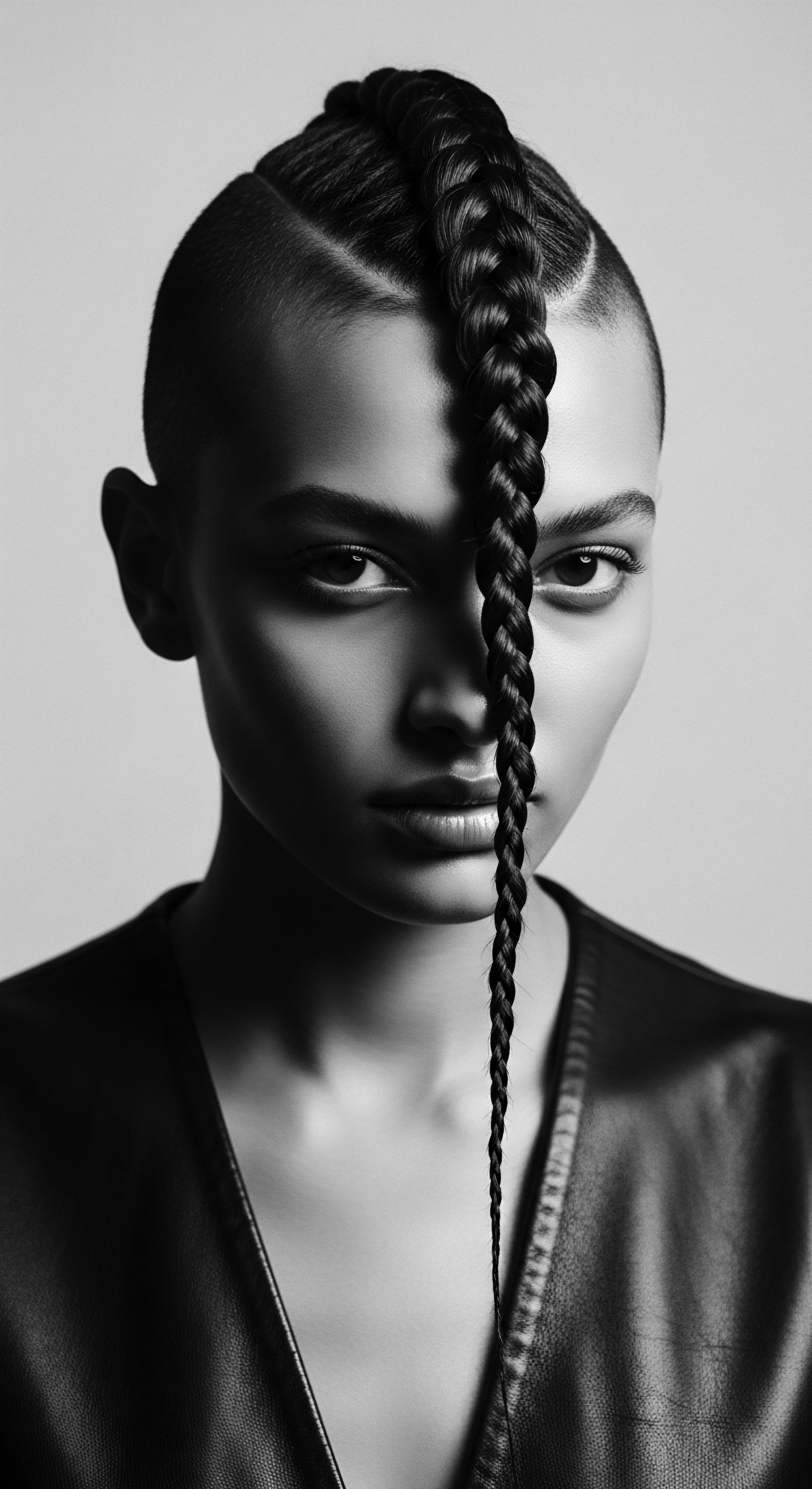
The Enduring Power of Natural Hair Colorants
The continuity of henna’s use from ancient Egypt to contemporary times serves as a powerful testament to the enduring effectiveness of ancestral wisdom. Today, henna remains a popular plant-based alternative to synthetic chemical dyes, valued not only for its coloring properties but also for its conditioning and strengthening benefits. This echoes the ancient Egyptian understanding of hair colorants as holistic agents, providing both aesthetic and therapeutic value.
Consider the profound cultural connections. The use of henna, for example, is not merely about achieving a particular shade; it is often tied to celebrations, rituals, and a sense of shared identity in many cultures across North Africa, the Middle East, and South Asia. For communities with deep roots in these regions, applying henna is a way of honoring a living heritage, a tangible link to practices passed down through generations.
The idea of hair as a symbol of vitality, community, and personal expression, as it was in ancient Egypt, finds resonant echoes in the contemporary movement to reclaim and celebrate natural textured hair, free from imposed Eurocentric beauty standards. The very act of coloring hair with natural substances becomes a heritage ritual, a moment of connection to a deeper past.
- Henna Powder ❉ Sourced from the Lawsonia inermis plant, dried leaves were ground into a fine powder, then mixed with water or oils to form a paste.
- Ochre Pigments ❉ Derived from iron-rich clays found in desert regions, these mineral pigments were pulverized and mixed with binders to create paints or colorants.
- Indigofera Plant Extracts ❉ While its primary use was for textiles, the deep blue dye from Indigofera tinctoria leaves could be combined with henna for darker hair tones.
A case study of archaeological findings from the Dakhleh Oasis in Egypt’s Western Desert, dating from Greco-Roman times (around 2,300 years ago), provides further insight into the diverse hair practices of the era. Researchers studying hair samples from 18 mummies from this cemetery, spanning various ages and genders, found evidence of a fat-based substance used for styling on nine of them. While this study primarily focused on styling products rather than explicit dyes, it highlights the widespread attention given to hair appearance across different segments of society, and implicitly, the application of various natural substances. Some of these mummies possessed natural hair, while others wore wigs, illustrating the varied approaches to hair care and adornment.
This archaeological data provides a concrete illustration of the lived experiences surrounding hair in ancient Egypt, revealing how the daily rituals of grooming, including the use of natural substances, were interwoven with individual identity and societal norms. The enduring power of these findings lies in their capacity to bridge the chasm of time, allowing us to connect directly with the choices and traditions of our forebears, recognizing a shared human impulse to care for and adorn the hair that crowns us.
Modern scientific analysis confirms the sophisticated use of natural colorants like henna, validating ancestral practices and connecting them to contemporary textured hair wellness.

Reflection
As we close this chapter on the natural substances that graced ancient Egyptian textured hair, we are reminded that heritage is not a static relic of the past; it is a living current, flowing through generations, shaping our present and illuminating our path forward. The ancient Egyptians, with their profound connection to the earth and their innate understanding of its bounties, laid down a legacy of holistic hair care that resonates deeply with Roothea’s “Soul of a Strand” ethos. They teach us that beauty rituals, particularly those involving our hair, are not isolated acts of vanity. Instead, they are deeply interwoven with identity, community, and an honoring of ancestral wisdom.
The red-orange hues of henna, pulled from the desert’s embrace, or the deep earthen tones of ochre, reflect a relationship with nature that was both practical and spiritual. These substances were applied not only to adorn the living but also to prepare the beloved dead for an eternal journey, signifying a continuity of care that transcends the physical realm. For those whose ancestry traces back to the diverse communities of the Nile Valley, or to the broader African continent where such traditions thrived, this history offers a powerful affirmation. It speaks to an inherited resilience, a knowledge embedded in our very DNA that whispers of plant alchemy and the power of adornment.
Our textured hair, in all its varied forms, carries the echoes of these ancient practices. When we seek out natural ingredients, when we honor the unique needs of our coils and curls, when we engage in mindful routines, we are, in a very real sense, participating in a relay of ancestral wisdom. The ingenuity of the Egyptians, their understanding of hair’s biology and its interaction with natural pigments, offers a foundation for contemporary wellness.
It encourages us to look beyond fleeting trends and reconnect with the elemental sources of beauty and care. This timeless pursuit of radiant hair, rooted in the earth’s generosity and guided by the hands of our foremothers and forefathers, is a profound testament to the enduring spirit of textured hair heritage—a legacy that continues to bloom, strand by soulful strand.
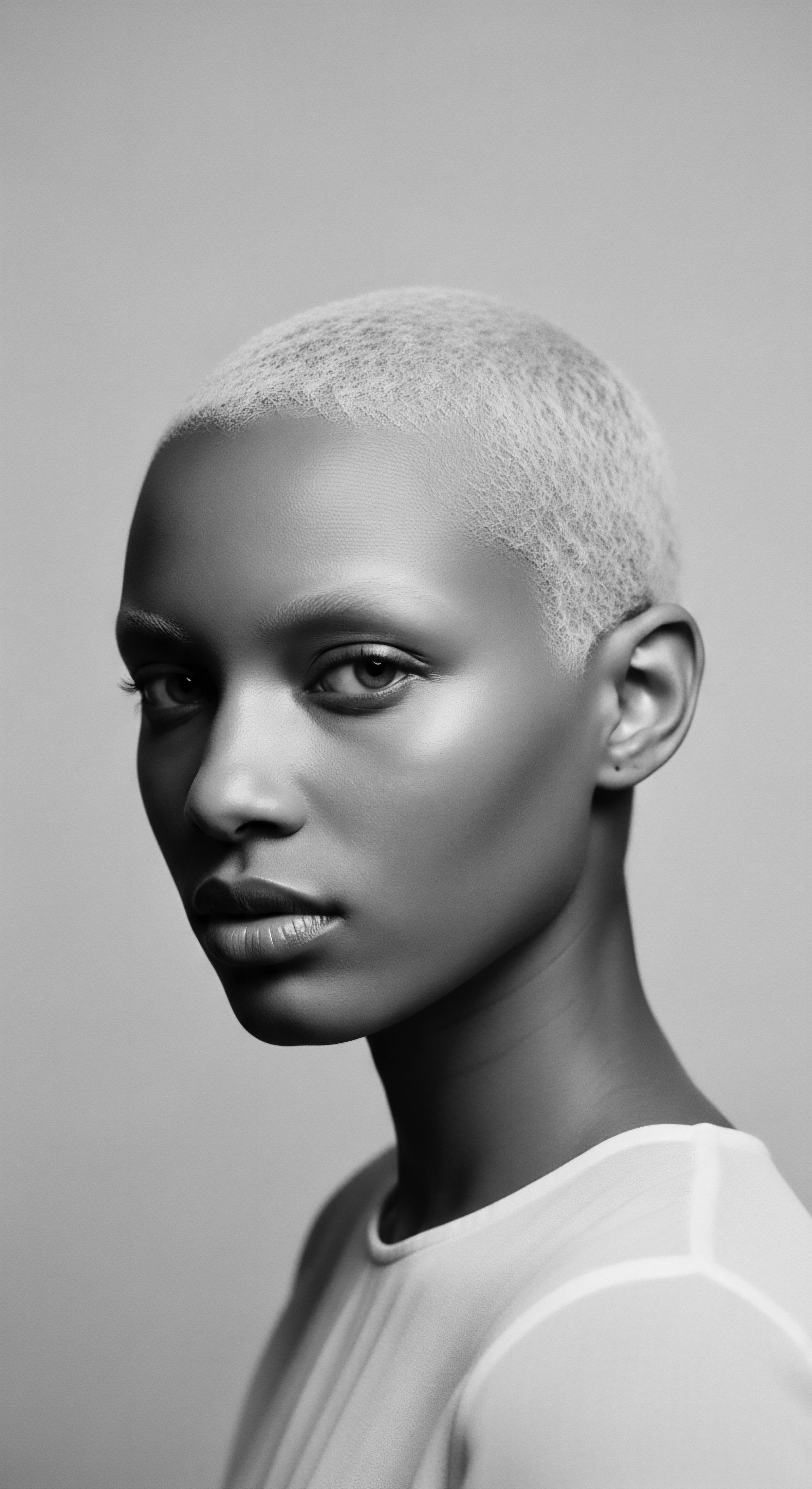
References
- David, A. Rosalie. (1993). Discovering Ancient Egypt. Facts on File.
- Fletcher, Joann. (1995). Ancient Egyptian Hair ❉ A Study of Its Production, Use, and Interpretation. University of Manchester.
- Ikram, Salima. (2003). Death and Burial in Ancient Egypt. Longman.
- Lucas, Alfred. (1962). Ancient Egyptian Materials and Industries. Edward Arnold (Publishers) Ltd.
- Manniche, Lise. (1999). Sacred Luxuries ❉ Fragrance, Aromatherapy, and Cosmetics in Ancient Egypt. Cornell University Press.
- Robins, Gay. (1997). The Art of Ancient Egypt. Harvard University Press.
- Shaw, Ian. (2000). The Oxford History of Ancient Egypt. Oxford University Press.
- Tyldesley, Joyce. (2006). Chronicle of the Queens of Egypt. Thames & Hudson.
